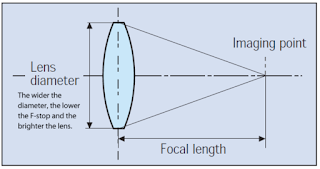Sunrise Photography | Become a photographer with Shubham Part-9
What you want is a picture where the bright parts (i.e. the sun and sky) aren’t too bright, and the dark parts (i.e. the foreground) aren’t too dark. Basically you want an HDR image, but rather than shooting on a tripod and combining multiple exposures in post-production, you can do it with a single image by shooting in RAW.
There are a couple of ways to expose for the sun so it’s not too bright. You can set your camera to Center-Weighted metering, which ensures the middle of your picture is not too bright or too dark. Another method (and the one which I prefer), is to have your camera evaluate the entire scene but use exposure compensation to under-expose by roughly two stops.
Regardless of how you meter the scene and set your exposure, the end result is the same. In your resulting image, you want the sun to be visible and not too bright.
Small aperture helps: If you have a high-end zoom lens like a 70-200 f/2.8 or a 300mm f/4, you might be tempted to shoot sunrise pictures with the largest possible aperture. Blurry foregrounds and backgrounds are great, right? So why wouldn’t you shoot wide open?
Contrary to what you might think, smaller apertures are better when taking sunrise photos. First, it helps make sure your entire picture is sharp. Bokeh is great on portraits but not so desirable on most landscapes. A blurry foreground (thanks to a wide aperture) can distract the viewer and leave the scene feeling kind of mushy as a result.
Another reason to use smaller apertures, like f/8 or f/11, is that it gives you more control over your exposure. Remember, the sun is really bright, so you don’t need to worry about not getting enough light in your picture! On the contrary, you actually want to limit the amount of light, especially since you want the foreground to be underexposed
Use a fast shutter speed
The sun moves fast – really fast. Or, rather, the earth spins fast. That’s what is actually happening when you see the sun come up. And just like any time you want to capture motion, you need to use a shutter speed that’s up to the task. Slower values like 1/30th and 1/60th will not only make exposure tricky, but result in a blurry sun as it speeds upwards on the horizon. Use a minimum shutter speed of 1/250th, and even faster if possible
src: https://digital-photography-school.com/epic-sunrise-photos-with-a-zoom-lens/
There are a couple of ways to expose for the sun so it’s not too bright. You can set your camera to Center-Weighted metering, which ensures the middle of your picture is not too bright or too dark. Another method (and the one which I prefer), is to have your camera evaluate the entire scene but use exposure compensation to under-expose by roughly two stops.
Regardless of how you meter the scene and set your exposure, the end result is the same. In your resulting image, you want the sun to be visible and not too bright.
Small aperture helps: If you have a high-end zoom lens like a 70-200 f/2.8 or a 300mm f/4, you might be tempted to shoot sunrise pictures with the largest possible aperture. Blurry foregrounds and backgrounds are great, right? So why wouldn’t you shoot wide open?
Contrary to what you might think, smaller apertures are better when taking sunrise photos. First, it helps make sure your entire picture is sharp. Bokeh is great on portraits but not so desirable on most landscapes. A blurry foreground (thanks to a wide aperture) can distract the viewer and leave the scene feeling kind of mushy as a result.
Another reason to use smaller apertures, like f/8 or f/11, is that it gives you more control over your exposure. Remember, the sun is really bright, so you don’t need to worry about not getting enough light in your picture! On the contrary, you actually want to limit the amount of light, especially since you want the foreground to be underexposed
Use a fast shutter speed
The sun moves fast – really fast. Or, rather, the earth spins fast. That’s what is actually happening when you see the sun come up. And just like any time you want to capture motion, you need to use a shutter speed that’s up to the task. Slower values like 1/30th and 1/60th will not only make exposure tricky, but result in a blurry sun as it speeds upwards on the horizon. Use a minimum shutter speed of 1/250th, and even faster if possible
src: https://digital-photography-school.com/epic-sunrise-photos-with-a-zoom-lens/

Comments
Post a Comment